Believe us, as long as you’re in Cusco, there will always be something to do!
Every moment spent in this magnetic place of Peru reveals another breathtaking destination to explore, another lesson to learn from its mysteries, and another once-in-a-lifetime experience waiting to be lived. No wonder the Incas chose this magical city as their capital!
In this blog, we’ll share the best day trips from Cusco so you can adjust your itinerary or fill up a free day in your schedule. You can choose the perfect plan depending on how much time you’ve got to spend here.
Ground zero: A day in town
Do you have extra time on your trip or don’t know where to start exploring? Touring the imperial city of Cusco is your best introduction to the rich history, culture, and beauty of the Andes. Once you get your bearings and learn the best places to hang out, you’ll be able to navigate alone for the rest of your trip.
Cusco, also known as “the navel of the world,” has so much to offer. From Inca architecture to colonial buildings, it has a mix of styles that will surprise you. Walking around the city is also helpful for getting used to the high altitude. It is very important to acclimate in Cusco (3.400m / 11.154 ft) to avoid altitude sickness on your future tours and hikes.
You can choose a City Tour or a Walking Tour. Both take just half a day and will let you to quickly get a head start on the hypnotizing capital of the Inca Empire.
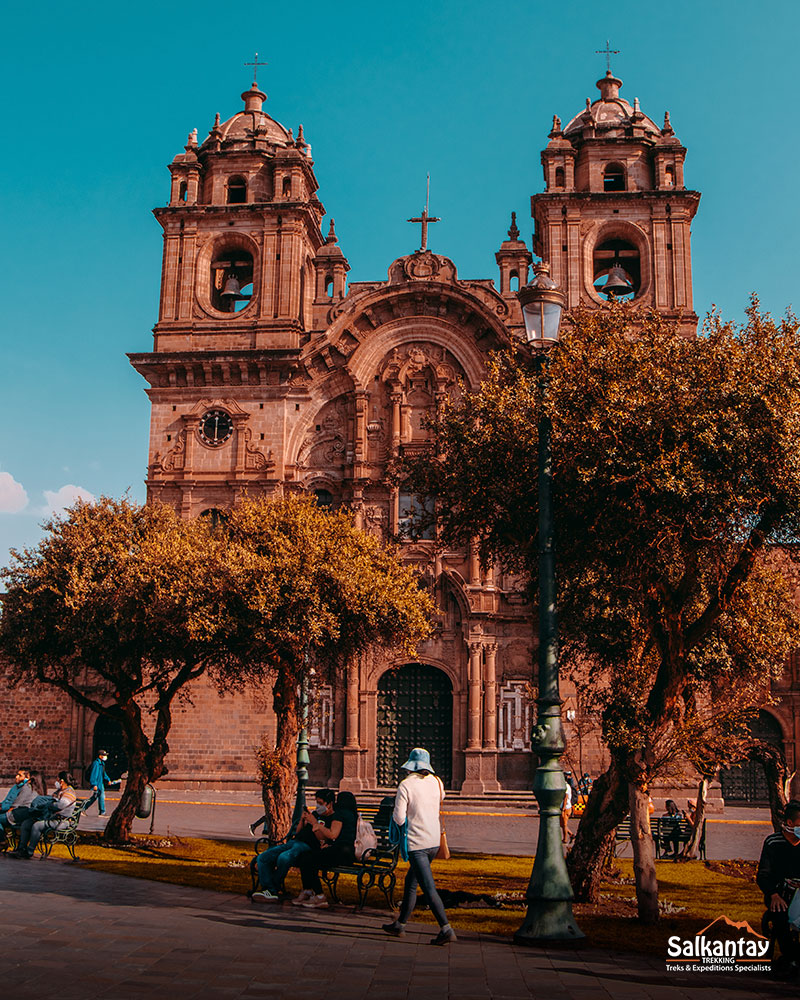

City Tour Cusco
This Cusco City Tour is based on the historical aspects of the city, taking you to visit the archaeological sites of Sacsayhuaman, Qenqo, Puca Pucara and Tambomachay. You’ll also visit the colonial Cathedral of Cusco and then, a fascinating and historically significant Spanish temple built on top of an Inca religious complex: Qoricancha. A complete journey through this interesting city that will transport you to the past.
Live the history of Cusco in our own skin!
Walking Tour in Cusco
To immerse yourself in the city’s vibrant life, take this Cusco Walking Tour. Your guide will introduce you to two main markets of Cusco:
- San Pedro Market: Known for its fresh local products and the artisan market, where you’ll find traditional Andean souvenirs.
- San Blas Market: No visit would be complete without exploring the hipster neighborhood of San Blas, a charming blend of history and modernity. You’ll find delicious places to eat, also offering vegetarian options.
You’ll also make stops at the colonial Sapantiana Aqueduct and 7 Borreguitos Street, iconic spots that likely appeared on your Instagram feed or in travel guides as you planned your adventure.
→ Once that’s behind you, you’re ready to explore outside the city and let the adventures begin.


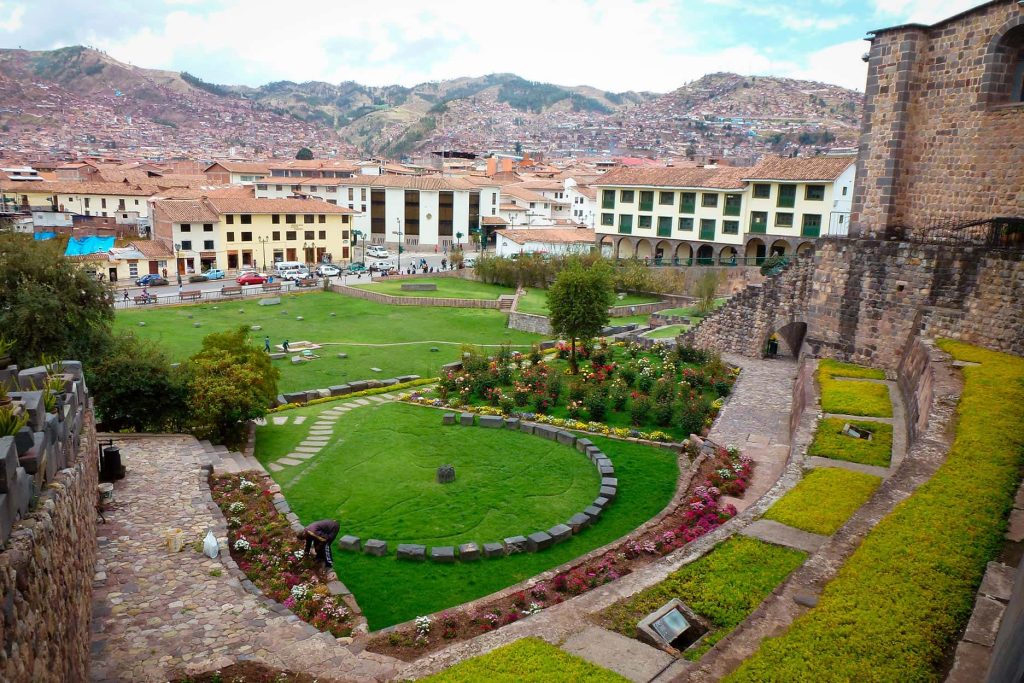
Sacred Valley: Getting to know the region of the Incas
The Sacred Valley of the Incas is chock-full of amazing things to see and do, and your trip to Cusco is not complete without spending time there. In this zone, you’ll discover amazing archeological sites that will immerse you in the world of the Incas.
You can visit most of these places in one day, but it is recommended to take 2 days to enjoy every single one at its fullest.
Pisac, Urubamba and Ollantaytambo
Pisac is home to some of the best-preserved Inca ruins in the region, and they can be reached by car or hiking. Apart from that, Pisac is famous for its big traditional market and the quaint nature of its riverside town. This is a great place to have a coffee, find unique souvenirs at a great price, or take pictures in its narrow, cobbled streets.
Afterward, you can have lunch in another picturesque valley town: Urubamba. This place offers a beautiful landscape surrounded by flowers and lush vegetation. In the valley, the climate is much warmer, allowing you to cool off or relax at the pool of a local spa. Urubamba is also an excellent destination for spiritual retreats, thanks to the peace the environment provides. Additionally, it is very close to the Maras salt mines and the Moray archaeological site, which you can visit on a tour we explain in the next section.
Later on, you can continue down the road to Ollantaytambo. This is the most traditional town you can find in the Sacred Valley, preserved through the years exactly how it was in the time of the Incas. It still has streets made of stones and houses built out of adobe. Needless to say, it’s absolutely charming! Ollantaytambo is also home to a great archeological complex that would be a shame to miss. This one involves a lot of walking and climbing, rewarding you with a bird’s eye view of the surroundings.
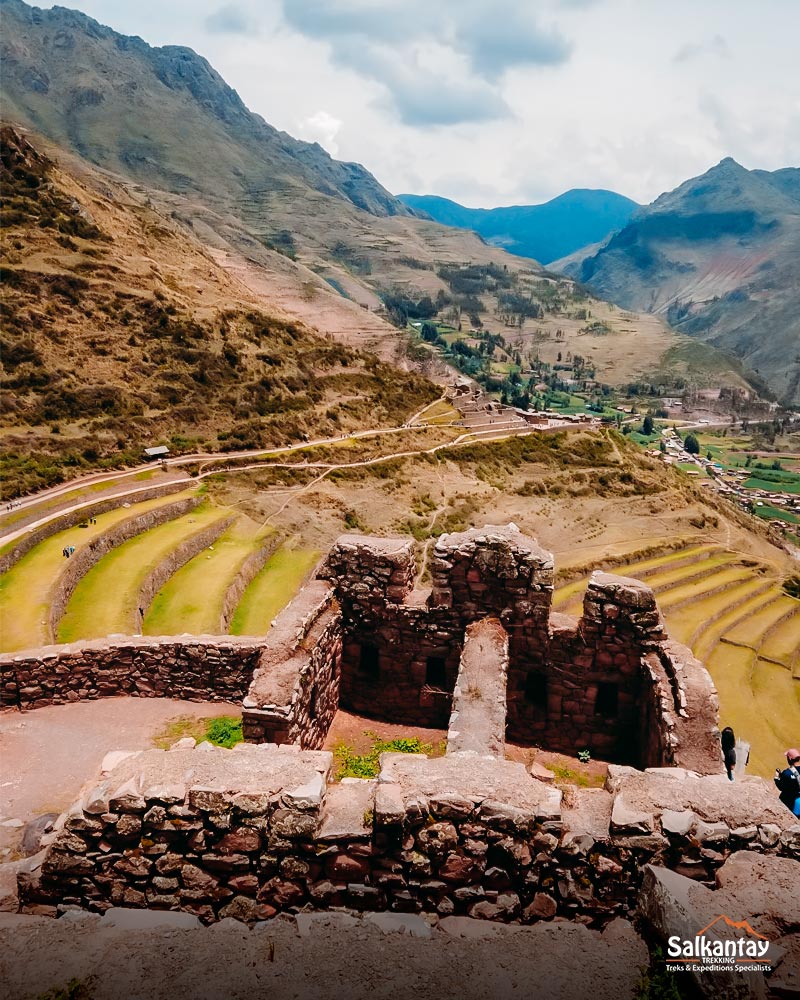

Maras and Moray
The other side of the Sacred Valley is not to be missed, either. The first stop is home to the unbelievable mountainside Salt Mines of Maras, or Salineras. A natural saltwater spring feeds about 4,500 pools in this UNESCO World Heritage Site. Locals have been extracting salt here since pre-Inca times using a process of water filling and evaporation. The pink salt harvested from these white, brown, and cream-colored pools is something extraordinary. It’s a medicinal and culinary wonder on par with famous Himalayan salt, containing iron, magnesium, calcium, zinc, and many other trace minerals. Take a bag home with you. Or even more!
Your second stop is another ingenuity of a civilization long past – the circular farming terraces of Moray. These perfect, extraterrestrial-looking rings were an experiment of the Incas to practice cultivating items not necessarily native to the region and find the perfect growing conditions for their foods. Each terrace is at a different level and creates a distinct microclimate, perfect for growing only certain plants. You’ll love how these whimsical shapes make you feel!
- Note: Quadrimoto and bike tours to Maras and Moray are a great way to navigate the valley. A visit to Chinchero can be included either with Maras and Moray or with Pisac and Ollantaytambo. If you have extra time, don’t hesitate to spend the night in any of these places or dedicate an entire day to each one!
Chinchero
The third stop would be Chinchero, home to the textile experts of the Cusco region. The most interesting thing to do here is a traditional textile workshop. You’ll learn how the locals make their dyes from natural materials to create wool of all sorts of colors, as well as how they spin that wool into yarn and weave it into intricate and symbolic Andean patterns. Apart from that, there’s also an archeological site overlooking the mountains and a colonial church on Inca foundations that you can visit.
On our unique tour, you can discover Maras, Moray, and Chinchero with a professional guide.


Explore the Surroundings of the Sacred Valley!
The Sacred Valley is surrounded by majestic mountains, beautiful rivers, and colorful fields. You can hike along scenic trails, visit hidden waterfalls, or simply enjoy the breathtaking views of the Andes. For thrill-seekers, the valley is a perfect area for outdoor adventures that will fill you with adrenaline.
Poc Poc Waterfall
For a laid-back downhill hike, you can visit the Poc Poc waterfall. The excursion begins in the ruins of Chinchero, where you walk through a part of the network of Inca Trails. The hike lasts about an hour and offers a calm and refreshing atmosphere. When you get to Poc Poc, you’ll be amazed by this 35-meter-high waterfall. The sound of the water will mesmerize you and fill you with a sense of peace. Afterward, you can continue to descend until you reach the town of Urquillos.
- REMEMBER: There are no shops or lodging, so bring your own food and water. Once you get to Urquillos, you can take a taxi to Urubamba and a return bus or taxi to Cusco.
Perolniyoc Waterfall and Racaypata Ruins
Outside of Ollantaytambo in the Sacred Valley, there’s a little-known hiking trail to the tall, free-falling Perolniyoc Waterfall paired with the pre-Inca Racaypata archeological site above it. This is the perfect way to catch a glance at the typical homes and towns of the Andes. You’ll pass by adobe houses along the way as people go about their daily business: farming, cooking, and tending to their families and animals.
You can start the walk to Perolniyoc at Pachar, a town located on the main road that involves a longer hike, or Soqma, a hidden town closer to the waterfall.
- Our Tip: Ask for directions along the way – if you speak some Spanish, that will be easy. It’s an out-and-back trail for a day trip. You can either pay your taxi driver for a round trip to wait for you to return to Cusco or Ollantaytambo, or take public transportation from Pachar.
For a longer experience, camp a few nights in the Andes as you make your way to the Ancascocha Lagoon. This trail was named by National Geographic as one of the 20 must-see dream walks in the world. It’s a trek for experienced hikers and can be connected with a visit to Machu Picchu.
Rafting y Tirolesa/Ziplining Tour
A unique experience available in the Cusco Region is white water rafting on the Urubamba and Apurimac Rivers, and these tours can be paired with exhilarating, valley-crossing zipline experiences. This is not among the most common activities people do when they come to Cusco, so you’ll have some unique stories to tell when you get home! These winding rivers are surrounded by the most fantastic scenery to enjoy as you go through their canyons, from the mountains to the jungle. With an experienced guide, you’ll conquer class II, III, and IV rapids.
- Did you know… This can be a day trip or multi-day rafting, camping and ziplining adventure. Some even include Machu Picchu at the end as the cherry on top!


Classic Adventures in Cusco
These treks are the best of Cusco. There’s a reason they’re the top search results on any Cusco tourism website or Google search. Being so well known, they can certainly get crowded. Nonetheless, they’re destinations that simply can’t be missed on a trip to Cusco.
Humantay Lake
If you’re looking for breathless natural scenes of extraordinary beauty, this destination has to be a part of your time in Cusco. This turquoise, glacial lake high in the Andes is at the foot of snowy Humantay Mountain and next to Salkantay Mountain. It looks like something that could only exist on a postcard. Humantay Lake is a surreal destination that will fill you with excitement for life and reignite your motivation to embrace it to the fullest. You’ll reach the lake after a 3.5-hour drive and a 1.5-hour hike. It’s a long day, but without a doubt, it’s worth it.
- Did you know… Aside from the Humantay Lake One Day tour, you can also reach the Salkantay Pass on our 2 Day Hike experience. You’ll get the chance to sleep at our Sky Camp and look at the stars through the glass roof before going to bed.
Vinicunca Rainbow Mountain
Rainbow Mountain is, to say the least, unique. It’s a natural place that boasts unnatural colors. Geology has really done a number on this one! It’s not every day that you see a mountain with stripes of pink, brown, red, magenta, green and gray!
Until recently, it remained undiscovered, hidden beneath the deep Andean snow and ice of the highlands. If you’re seeking extraordinary travel experiences, this is one you simply can’t miss. Plus, you’ll be hiking to over 5,200 meters (17,000 feet)! A true challenge of personal growth.
Info: The adventure includes a 1.5-hour hike along a colorful trail to reach the mountain’s most photogenic viewpoint, following a 4-hour drive on winding roads.
- Pro tip: Take Dramamine or other medicines if you’re prone to carsickness—or even if you’re not! Be prepared for a moved journey.
Note: While Vinicunca is undeniably stunning, we recommend exploring one of the alternative rainbow mountains nearby. You’ll enjoy a quieter experience, capture better photos, and avoid the crowds. Check out the “Off the Beaten Path Exploration” section below for details!
You can book a day tour of Vinicunca Rainbow Mountain here.
The Seven Lakes of Ausangate
This one-day tour is truly a special treat, as the Ausangate Hike is typically only accessible on a 6+ day trek. Ausangate is the highest and most sacred mountain in the Cusco region, being an essential source of water that nourishes the whole area. This route is considered the most “wild” trek of them all, but the tour around the seven lakes is a more leisurely adventure.
Lace-up your boots and go for it! You won’t regret it for even a second. Here’s a hike that lets you experience the best of Ausangate and its stunning turquoise glacial lakes in just one day (plus a relaxing soak in hot springs!).
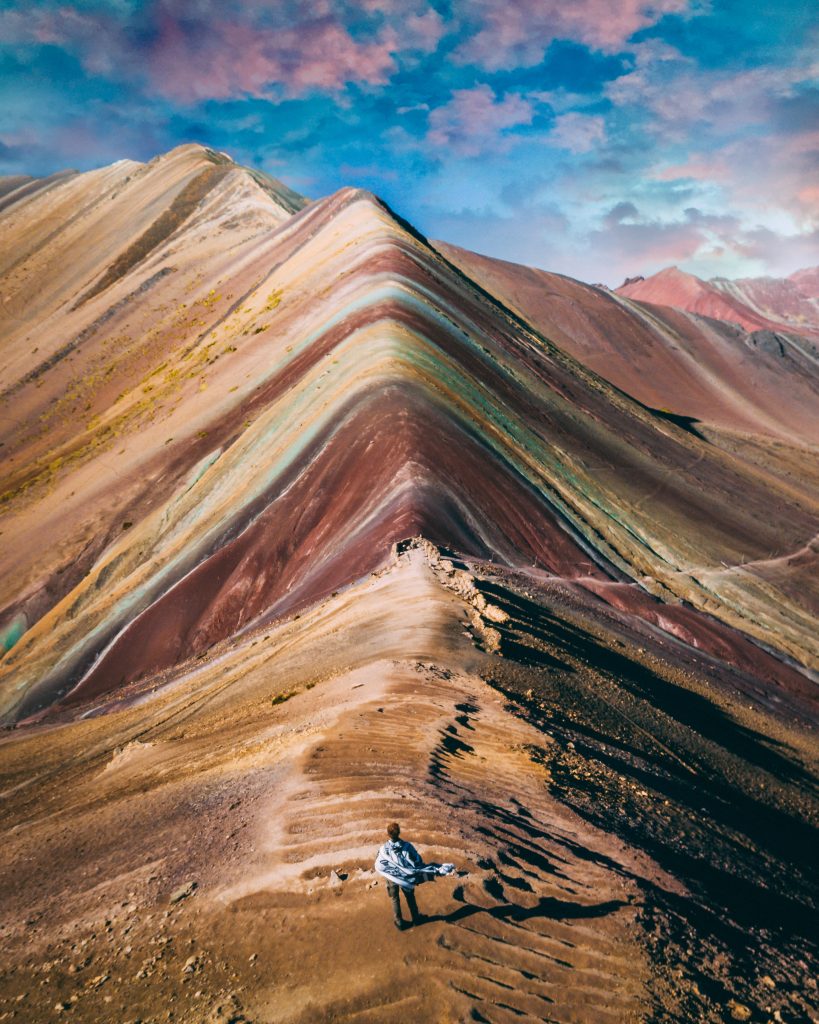

Inca Trail
Yet another UNESCO site of Cusco, the Inca Trail is a modern-day adventure with a deep connection to the past. The Qhapaq Ñan, as it was called in the Quechua language by the Incas, was the 30,000 km road network connecting the Inca Empire from one extreme to the other. These trails are truly an engineering marvel designed to traverse the challenging mountain and jungle terrain. The network once spanned six South American countries, but its most famous segment is the route leading from the Sacred Valley to Machu Picchu, culminating at the Sun Gate above the majestic city.
- Fun Fact: You can actually hike on the Inca Trail in just one day! Of course, it’s not the full trek, but you will be able to check this one off your bucket list and say, “I did it!”
A magic way to touch this sacred ground and living piece of history is through a One Day Inca Trail Hike, ideal if you’re short on time.
Machu Picchu
Last, but certainly not least, one of the 7 Wonders of the Modern World: the Historical Sanctuary of Machu Picchu.
Praised by UNESCO and admired worldwide, it stands as the pinnacle of the Inca Empire—a luxurious mountaintop retreat for its elite. What makes it truly remarkable is that it remained untouched by the Spanish, who never discovered it hidden deep within the lush cloud forests of the Andes. This is a great place to walk around and wonder about the unrevealed mysteries only known by the surrounding mountains. How did they bring these tons-heavy stones up here? How did they carve those stones so precisely that they didn’t need cement? Why did they put so much effort into it? What was daily life like here in this city?
If you want to visit a wonder of the world but you’re short on time, we’ve got you covered! With the Machu Picchu One Day Tour, you’ll see the Inca’s most significant creation in a single day. The adventure begins with an early morning departure from Cusco, heading toward Ollantaytambo. From there, you’ll board the train to Machu Picchu. You’ll enjoy an incredible journey through the Andes, seeing the fantastic and changing landscapes as you approach the city of the Incas.
Are you excited about discovering this place full of energy? With your guide, you’ll walk around the same areas the Incas did, unveiling all the secrets they hide.
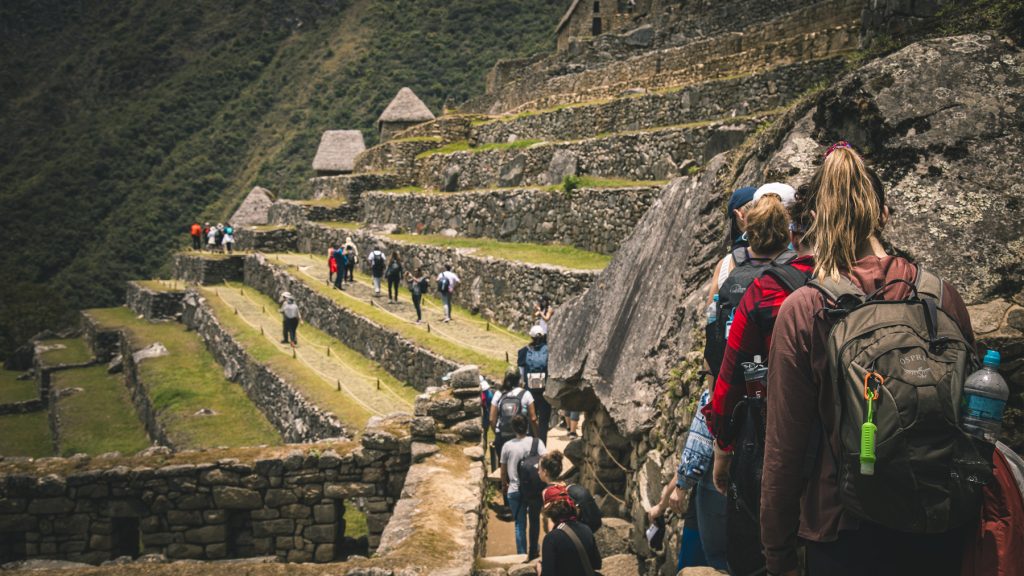
Off the Beaten Path Exploration
One thing that can be annoying while traveling is being surrounded by multitudes of tourists filling up the most amazing places you’ve ever seen (think Mona Lisa with a cloud of visitors blocking your access to see her after traveling all the way to France).
Wouldn’t it be cool to see the most incredible places in Cusco with just a handful of other people? That would give you time to sit and be present, really connect with Mother Nature, and reflect on life and all the sensations and emotions you’re feeling.
Here’s how to explore Cusco that way and have the magic of the Andes all to yourself.
Alternative Rainbow Mountains
Peru is a diverse wonderland of amazing landscapes, and you NEED to see Rainbow Mountain. Thankfully, the most famous Rainbow Mountain, Vinicunca, isn’t the only one in the area; it’s just the most well-known! Here are two others of equal beauty that you can visit without the crowds.
Palccoyo Rainbow Mountain
Palccoyo is a rolling, multicolored hill that is actually a set of three rainbow mountains on one hike! This hike is less strenuous and at a lower altitude than Vinicunca, which could make your day more enjoyable. You’ll still get a view of Ausangate Mountain from this site, enriching your walk.
Pallay Punchu Rainbow Mountain
On top of these bizarre rainbows of hues, there is Pallay Punchu with its peculiar quality: sharp, lineal rock faces jutting up into the air. It’s not a typical mountain. Natural processes over the years have left this truly awesome sight for you to marvel at. It’s a really good choice to include in your busy itinerary.


Waqrapukara
This hike will reward you with a whimsical, double-horned pre-Inca fortress on the edge of a mountain peak overlooking the Apurimac Canyon. The scenery in Waqrapukara is spectacular, not just at the final destination but along the entire trail. You’ll be out in the middle of nowhere, accompanied only by llamas, alpacas and other wildlife in their natural habitat. The trail is not marked, so you should go on a guided tour.
Qeswachaca Bridge
The only surviving straw bridge from the time of the Incas can still be visited—and crossed! This 30-meter-long bridge spans high above the Apurimac River, offering a unique cultural experience celebrated by UNESCO. Take your time as you walk across the bridge, pausing to admire the canyon’s stunning details on either side and soaking in the soothing sound of the rushing water below. If you visit in June, you’ll witness the incredible tradition of the local communities dismantling and rebuilding the Qeswachaca bridge, ensuring it endures for another year.
Huchuy Qosqo
Here’s another trek for you to do without being overrun by other hikers: Huchuy Qosqo. It’s in the Sacred Valley and leads to an extensive and highly impressive Inca archeological site, on a plateau overlooking the surrounding snow-capped mountains. Its name means “Little Cusco,” and it’s a place that’ll help you continue to piece together the past as you travel around this part of Peru! You can go on an all-inclusive day trek here.
Slow Pace Discovery
Near Cusco, you can visit different and unknown places that let you enjoy a calm day surrounded by the beauty of nature. There are several hidden gems where you can escape the hustle and bustle of the city and spend a peaceful day immersed in a green environment.
The South Valley of Cusco
Cusco’s South Valley is much less frequently visited than the more well-known Sacred Valley, and that makes it a beautiful place to spend your time. There are two main archeological sites to stop at: Tipon (Inca) and Pikillacta (pre-Inca), both impressive and symbolic constructions of their times. Stop at Raqchi, too, the Temple of the god Wiracocha.
In Huasao, you can visit its swamp with wooden creatures placed throughout, making it feel like you’re walking through a fantasy movie. For a contrast, you can also visit the Andahuaylillas Cathedral, called the “Sistine of the Americas” for its ornate decoration.
Huaypo Lagoon
This beautiful lake is huge (about a square kilometer!) and offers you the chance to spend all day outside with family and friends and avoid staying on the tourist radar. You can rent a boat or kayak to enjoy the scenery to the fullest (be careful of storms!). Go to the middle and enjoy 360° views of mountains, farms, and traditional country houses. Bring a picnic, grill out, or buy a hot meal from local residents.
- Discover The Legend: The God of the Sun asked the twin children of Manco Capac (the founder of the Inca civilization) to go with him to see the sunset. When someone went to look for them, they saw that the son, who had walked further, had turned into the Huaypo Lagoon, and the daughter into the Piuray Lagoon.
The atmosphere is magic and incredibly soothing: the wind, the sun, the view, the sound of the water, and the small animals all around create the perfect setting to rest and recharge. You can also rent horses or ATVs to explore the lush green areas surrounding the lake.
To get there, you can take public transportation from Cusco to Izcuchaca and then a taxi to Huaypo, or take a direct taxi from Cusco, which will be a little bit more expensive.
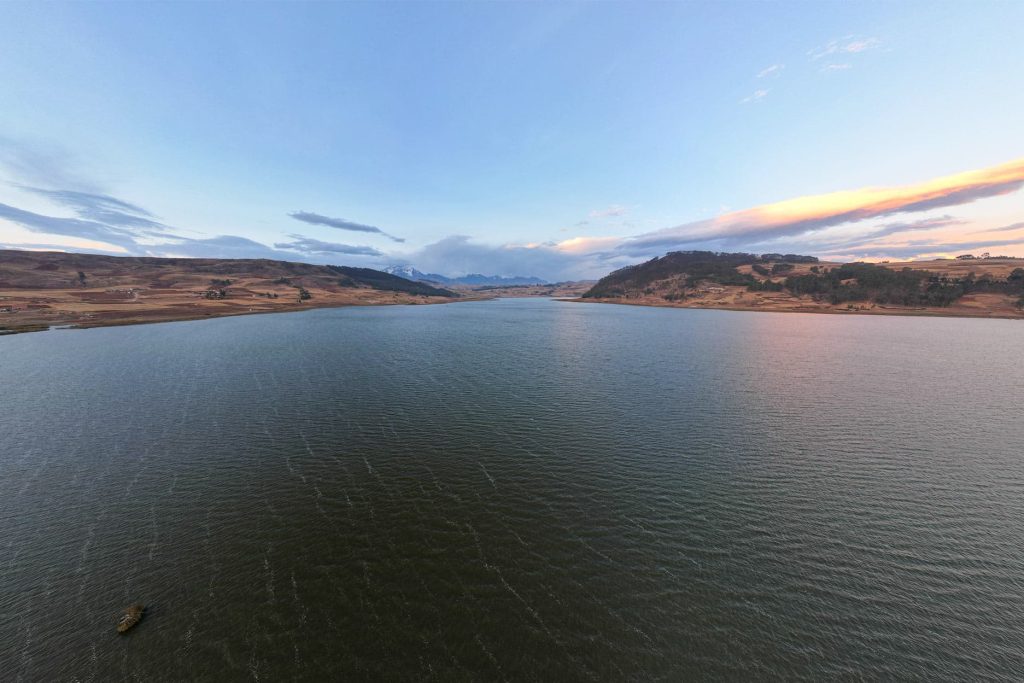
Kinsa Cocha Lakes
The glaciers and streams of the Andes provide a beautiful landscape of sparkling lakes scattered throughout the mountains, and you’re bound to see several during your time here. About 45 minutes outside of Pisac, there’s a great hiking trail taking you past three lagoons, and you’re likely to be the only one on the Kinsa Cocha Lakes Trail, also called the Azul Cocha Trail. You’ll need to hire a round-trip taxi to take you there and wait for you while you enjoy the 6.3-km circular walk, and then return you to Pisac (otherwise, you won’t find return transportation). It will take you about 2.5 hours to hike, but you’ll want to stop and enjoy the scenery along the way.
- Meal Deal: Take your lunch with you! This is an entirely natural environment without urban spaces, so bring your own food and snacks. Having a picnic in such a pure place has no price.
Chonta
Chonta is the best place around Cusco for a chance to see condors, one of the largest flying birds in the world, soaring in their natural habitat!
Overlooking the Apurimac Canyon and far off the tourist map, this trail takes you to a wide hill with super picturesque surroundings for the perfect photo of your hike in the Andes. Hopefully, there’ll be a condor or two in the backdrop. It’s not a challenging hike, so you can go with the whole family or a less active travel buddy. Bring a picnic lunch while you wait for the Andean condors to come out in the afternoon!
You can go on a planned tour or take public transport to Limatambo (2 hours from Cusco) and hire a round-trip taxi up to the trail’s start in Chonta (1 more hour). After your hike, you can go an hour further down the Pan-American Highway to enjoy the hot springs of Cconoc, on the banks of the Apurimac River.
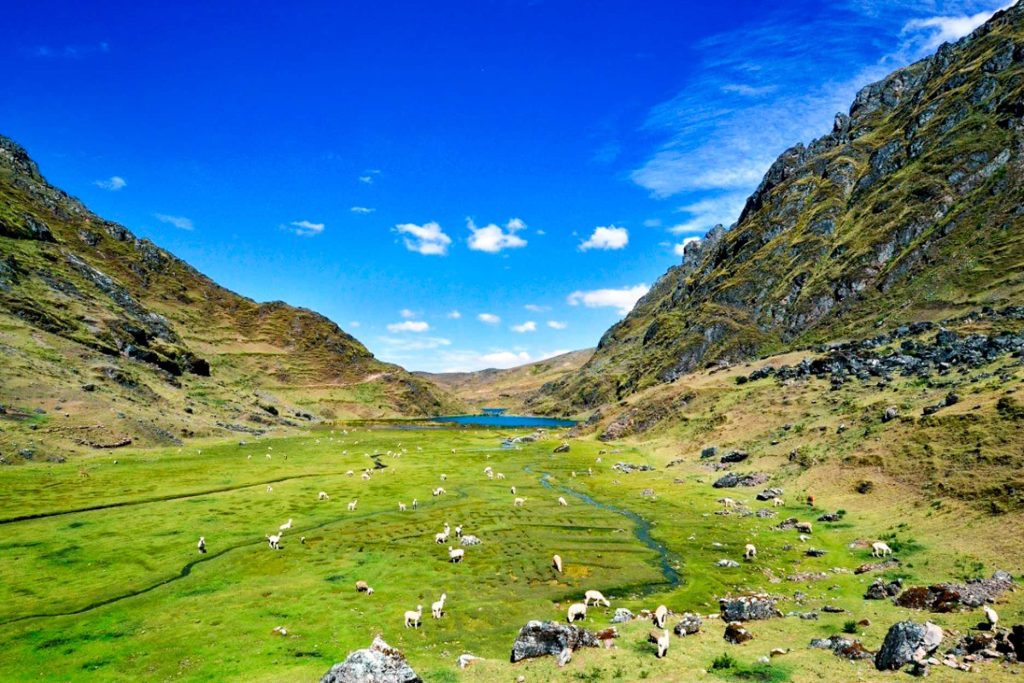
A World of Sensations is Waiting for You
Cusco is a city where every corner tells a story and every moment awakens your senses. From the vibrant colors of traditional textiles to the earthy aroma of freshly brewed coca tea, it’s a destination that immerses you in culture and history. Taste the fusion of Andean and modern flavors and hear the echoes of centuries-old traditions in the colorful markets. A world of sensations waiting to be discovered.
Chocolate and Coffee Tour
Across Peru, stretches of incredibly fertile land produce two of the world’s most desired luxury products: coffee and chocolate. Coffee and cocoa farm tours can be combined seamlessly, offering a unique experience in Peru’s highland jungles. These experiences provide a glimpse into traditional Peruvian life, as you’ll spend time in a family home on a working plantation. It’s an immersive cultural and gastronomic adventure where you can savor freshly made products, learn about the cultivation process, and connect with the warmth and traditions of local communities.
Peru ranks among the world’s top producers of the beloved coffee bean, offering a variety of flavor profiles praised by professional coffee tasters. We all love this drink, and if you’re addicted to your morning caffeine, you’ll be fascinated to get an inside look at where it comes from, the process it goes through to fill your mug, and the people dedicated to cultivating it.
Another fantastic product is cacao. This ingredient is used worldwide to create one of the most delicious foods: chocolate. Our favorite sweet treat comes from the mix of the cacao bean with sugar and sometimes milk. Also, a drink made from this magical fruit has been used for almost 4,000 years in medicine and ritualistic ceremonies. It’s even called “the food of the gods.”
No wonder it’s the world’s most popular comfort food!
Cooking class/Food and market tour
You simply cannot visit Peru without finding a new favorite food. Crafted through generations, across all types of locations, and mixing different cultures, Peru is home to one of the most diverse gastronomical scenes on the planet. Its fertile lands produce an abundance of fruits, vegetables, and grains. Peru is the birthplace of several superfoods that have gained global fame, including quinoa, maca, kiwicha, chia, avocado, purple corn, tarwi, cacao, lucuma, and goldenberries. These ingredients rich in nutrients thrive in Peru’s diverse climates and have been staples of the local diet for centuries!
Thanks to Gastón Acurio, a world-renowned chef, Peruvian cuisine has earned its place on the global stage as one of the finest. His influence has spotlighted Peru’s unique culinary heritage, blending traditional ingredients with innovative techniques to create flavors that captivate food lovers worldwide.
If gastronomic tourism piques your interest, hiring a guide is essential to fully appreciate Peru’s world-class cuisine. Start with a food tour of the city, discovering the best places to eat in Cusco, savoring its finest dishes and learning the stories behind them. Then, visit one of Peru’s vibrant open-air markets with fresh, local ingredients. Cap off this culinary adventure with a hands-on cooking class, using the market’s fresh produce to create traditional dishes.
Your taste buds (and friends back home) will thank you for the unforgettable experience!
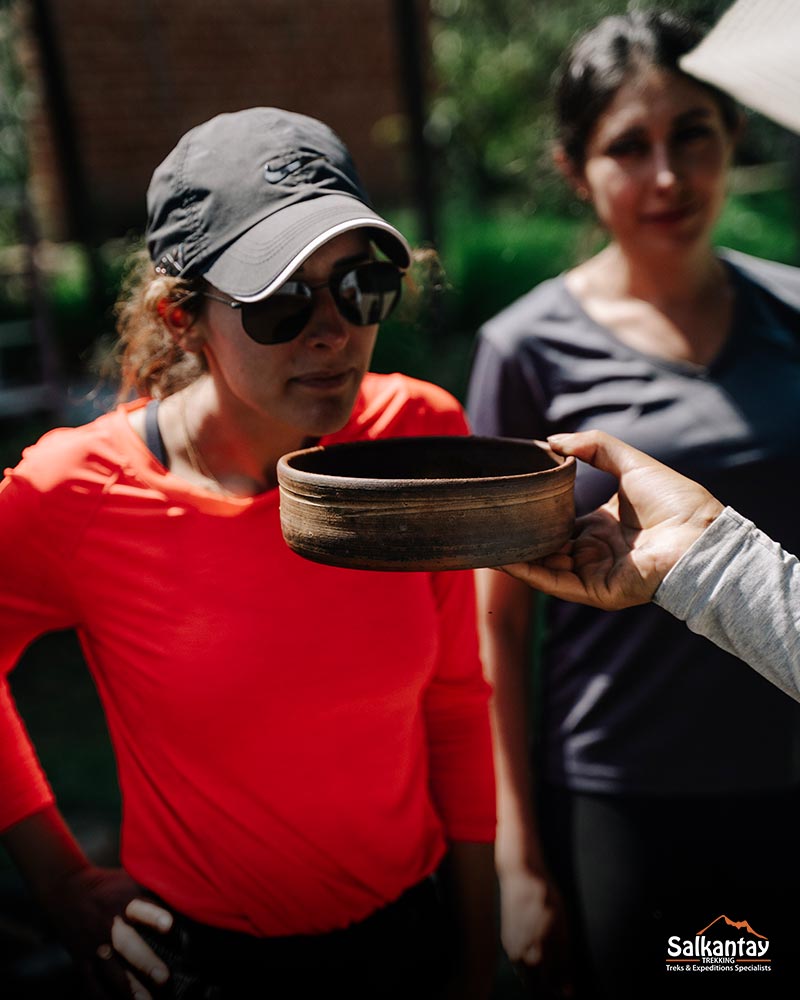

Horseback Riding above Cusco
One of the most fun activities you can do with your family or travel buddy is riding a horse around the mountains surrounding the city of Cusco! There’s no more exciting way to get to know the Andean landscape or relax after a few tiring days of rough travel.
Of course, you’ll enjoy the bird’s eye view of Cusco to appreciate its beauty from above. Following the road toward Pisac, right past the Qenqo archeological site, locals are waiting on the side of the road with horses. You can rent a guided tour for a few hours at a very reasonable price and enjoy a pleasurable walk with these delicate animals. No experience is needed!
Textile workshop
The Andean region of Peru is renowned for its stunning, intricate, and vibrant textiles that bring life and energy to every Peruvian landscape, beautifully contrasting with the natural earth tones of their surroundings. Since ancient times, Peruvians have used natural dyes made from local plants—and even insects—to color sheep, llama, and alpaca wool in every hue imaginable.
From shearing and spinning to dyeing and weaving, there’s a wealth of knowledge to uncover about Andean fabrics and their complex, meaningful designs. To immerse yourself in this tradition, book a spot at a textile workshop in Cusco or Chinchero, in the heart of the Sacred Valley.

Which Adventure to Choose?
→ Important tip: You need a few days to let your body adjust before attempting the higher-altitude treks, or you could be suffering from altitude sickness. Here are the above-mentioned destinations in order of altitude (low to high) to help you decide which to do first.
| Rafting/zip lining in the Sacred Valley | 1,500 m | 4,920 ft |
| Coffee/Chocolate Tour | 1,650 m | 5,410 ft |
| Cconoc Hot Springs | 1,700 m | 5,580 ft |
| Machu Picchu | 2,430 m | 7,970 ft |
| Sacred Valley (except Chinchero) | 2,440 m | 8,005 ft |
| Chonta | 3,400 m | 11,150 ft |
| City of Cusco | 3,400 m | 11,150 ft |
| South Valley | 3,400 m | 11,150 ft |
| Perolniyoc Waterfall | 3,460 m | 11,350 ft |
| Huaypo Lagoon | 3,500 m | 11,480 ft |
| Poc Poc Waterfall | 3,460 m | 12,335 ft |
| Chinchero | 3,760 m | 11,335 ft |
| Qeswachaka Bridge | 3,790 m | 12,430 ft |
| Waqrapukara | 4,140 m | 13,580 ft |
| Kinsa Cocha Lakes | 4,200 m | 13,780 ft |
| Huchuy Qosqo | 4,200 m | 13,780 ft |
| Inca Trail | 4,200 m | 13,780 ft |
| Humantay Lake | 4,200 m | 13,780 ft |
| Pallay Punchu Rainbow Mountain | 4,650 m | 15,255 ft |
| Ausangate 7 Lakes | 4,800 m | 15,750 ft |
| Polccoyo Rainbow Mountain | 4,900 m | 16,070 ft |
| Vinicunca Rainbow Mountain | 5,200 m | 17,060 ft |
Cusco Day Trips Tips
To enjoy your day trips to the max, take a note of these tips to take into consideration.
- Take Plenty of Water
Wherever you decide to go for a day trip, make sure you take enough water with you as you’ll likely be at high altitude and out in the sun, which can both dehydrate you. Always have extra cash in case you need to buy more water or snacks to keep you going. - Protect Yourself from the Sun
The sun at the altitudes can be very damaging, especially if you have fairer skin. You’ll be much closer to the UV rays, so we recommend at least a factor 50+ sunscreen or higher. Also, ensure you wear a sun hat and sunglasses for extra protection. - Take Time to Acclimatize
Hiking at high altitude is no joke, and if you aren’t used to being at this elevation, it’s essential you spend a few days in Cusco or the Sacred Valley to acclimate. It’s best to enjoy the simpler hikes and days out before you decide to hike up to Humantay Lake or any of the Rainbow Mountains, for example. - Bring Your Passport
For any trips in and around Cusco, you should always carry your passport with you. Most places require this for you to enter, and you don’t want to be refused entry because you forgot to pack it. - Get Insured
Another very important thing you need to have is travel insurance. Yes, you can go on most trips without it, especially if you travel alone, but many agencies and tour operators won’t allow you to travel with them if you aren’t insured. Health care in Cusco is also very expensive should you require it.

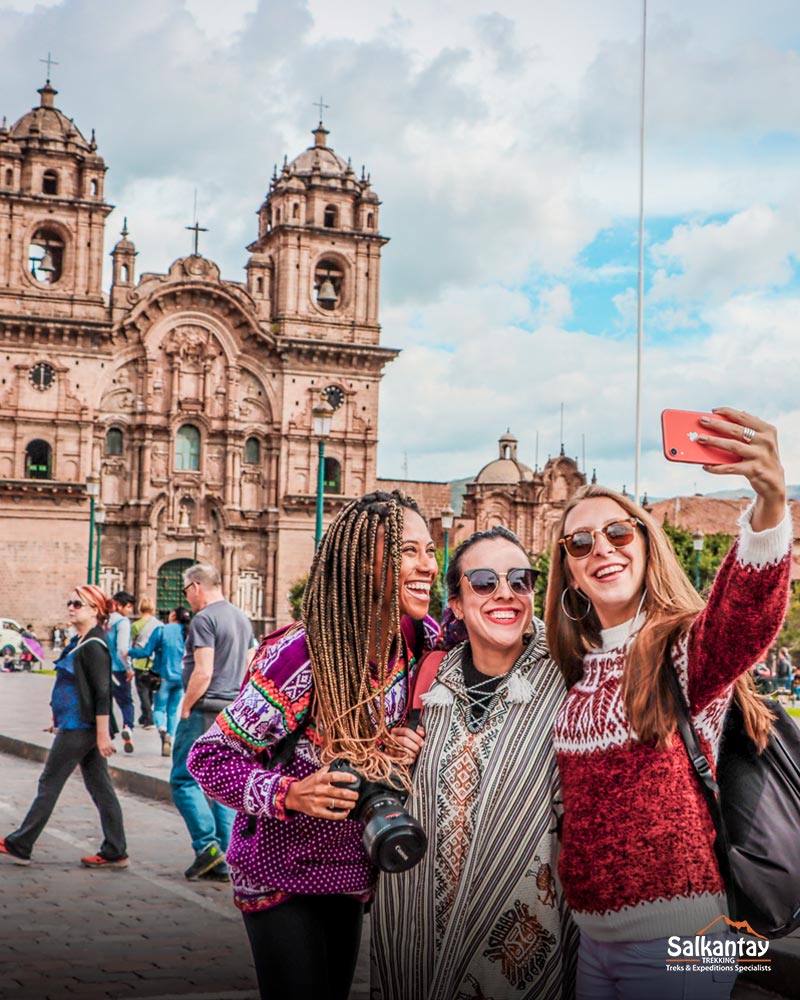
In Conclusion…
You simply can’t go wrong with any of these options around the magical region of Cusco. There’s a good reason it’s the top tourist destination in the country and one of the top in the world. Choose wisely which of these incredible day trips to take advantage of. Whether it’s the top destinations, middle-of-nowhere adventures, or relaxing days in the Andes, you’ll make memories that will last a lifetime!
You May Be Interested In
- How to get to Cusco?
- How to Acclimate in Cusco: Everything You Need to Know
- Hiking in Cusco: Short Routes to Conquer in Less than a Day
- Sacred Valley of the Incas: The mountains are calling you!
- Rainbow Mountains in Peru: Everything You Need to Know
- Humantay Lake: Everything You Need to Know
- Machu Picchu: The easy way
- Visit Ausangate and Community Tourism: Discovering the Andean Communities
- Adventure at Altitude! How to Train to Fully Enjoy Trekking in Peru
- Reasons Why Peru Will Be Your Next Travel Destination in 2025

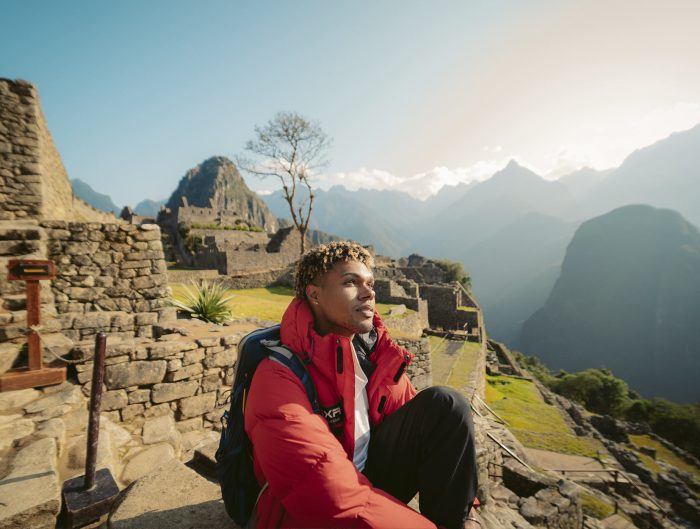
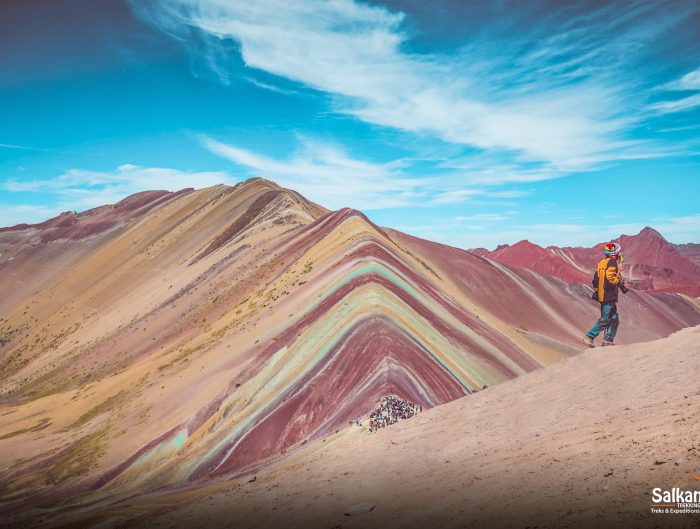







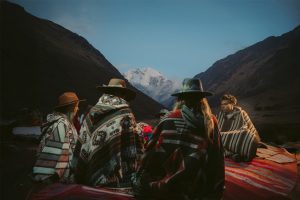
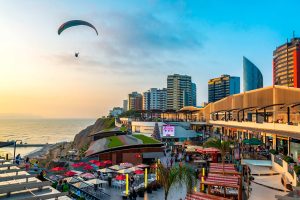


Leave A Reply